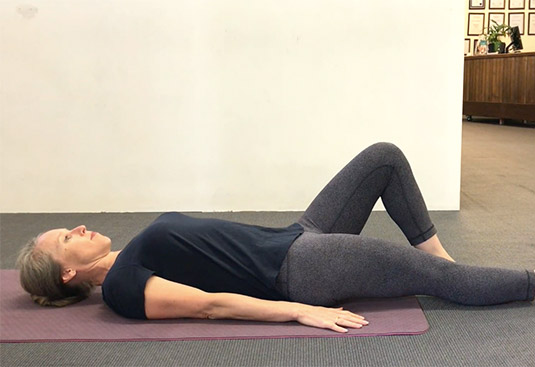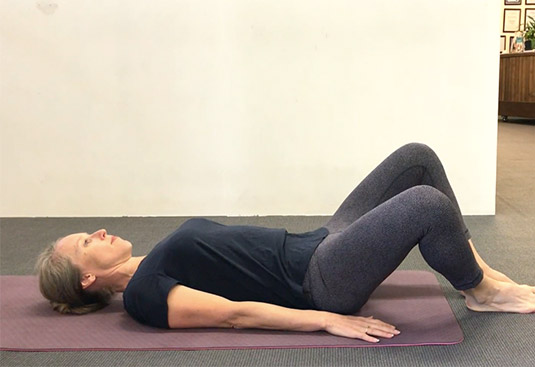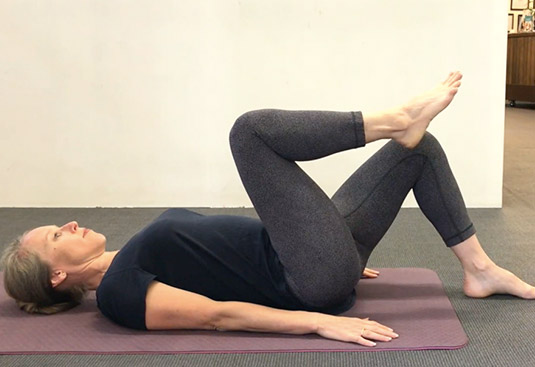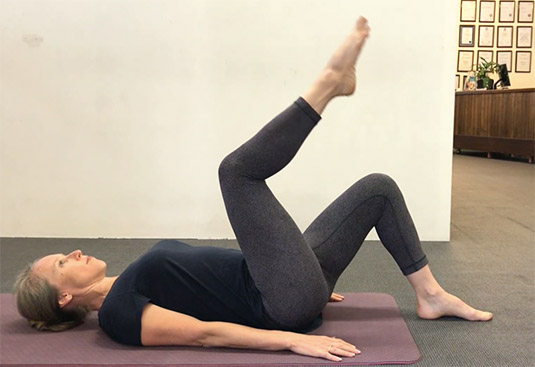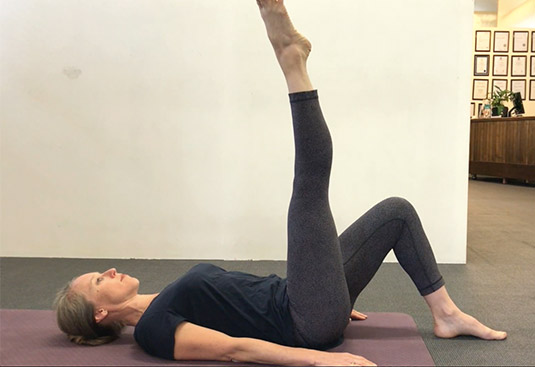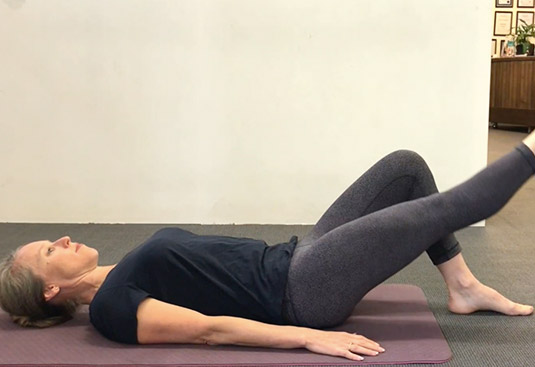Leg Circles
These series of exercises leading up to the Leg Circles exercise are a wonderful way to release the hips that today spend so much time in one position, i.e. seated. From there we explore independent movement of the leg coupled with control and stability in the pelvis and torso.
Katrina Edwards – principal Pilates practitioner for Aligned for life Pilates, faculty educator and presenter for National pilates Training.
Hip Release – sliding
Lying on the mat in start position – knees bent, feet hip width apart, arms by your side gently pressing into the mat. Inhale to prepare, exhale and slide one heel along the mat until the leg is straight; inhale and on an exhale reverse the movement to return the leg to the start position. Do this 3-5 times on each leg. |
Hip Release – openers
From the same start position, on an exhale, gently lower one knee out to the side, then slide the heel down to meet the other foot, roll the leg parallel; inhale and exhale slide the heel back to the start position. Do this in both directions 3-5 times on each leg. The aim here is to lower the knee to the side only as far as the pelvis and torso remain in the same position, i.e. no rocking of the pelvis in the direction of the moving leg. Engaging pelvic floor and lower abdominal muscles prior to moving will assist with stability and control. |
Single leg lifts
From the same start position, on an exhale raise one leg in a bent position (90/90), inhale and hold, then exhale and return to floor. Do this 3-5 times on each leg. The aim here is to lift the knee only as far as the pelvis and torso remain in the same position. Try and find the same stability and control as the ‘Hip Release – openers.’ |
Leg arcs
From the start position, on an exhale raise one leg in a bent position (90/90), then straighten the leg (toes pointing to the ceiling), inhale then exhale and reverse the movement to bring the leg back to start position. Do this 3-5 times on each leg. Take a snapshot here between repetitions– hips heavy, arms pressing into the mat, pelvic floor and abdominals engaged. |
Leg ‘tic toc’ singles
Start position but with both legs extended straight, parallel and active. Float one leg up straight as for Leg Arcs. Inhale to prepare and then on exhale send the leg out to the side and then back across the body. Your range of movement will be dictated by how stable you can keep your pelvis. Imagine your pelvis is a bowl of water where the level shouldn’t change. You might like to put a small ball on your navel to give you feedback about pelvic movement. Do this 3-5 times for each leg. A small controlled movement here is much more effective than a large destabilizing movement. |
Leg lift and lower
Start position but with both legs extended straight, parallel and active. Float one leg up straight as for Leg Arcs. Inhale to prepare, exhale and lower the foot to the mat, inhale here and then exhale to return. Do this 3-5 times on each leg. When you feel that you understand about the movement and maintaining pelvic and torso stability you are ready for Leg Circles! |
Cadillac leg circlesTom Campbell – Client |
Leg circlesChantel Roulston – instructor- Aligned for life Pilates, faculty educator and assessor for National pilates Training |
Leg circlesLying in position as for Leg Lift and Lower, with one stretched out along the mat and the other extended up to the ceiling. Arms out to the side in ‘T’position.Inhale to take the leg across the body, circle down and around, return to centre. Use an exhale for the next leg circle. Do 6-10 in each direction and on both sides. Things to watch out for when you are not doing this exercise under supervision:
What you will feel:
|

